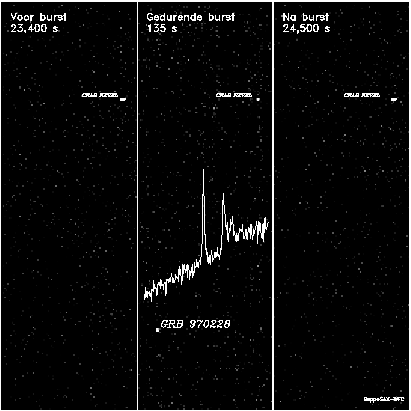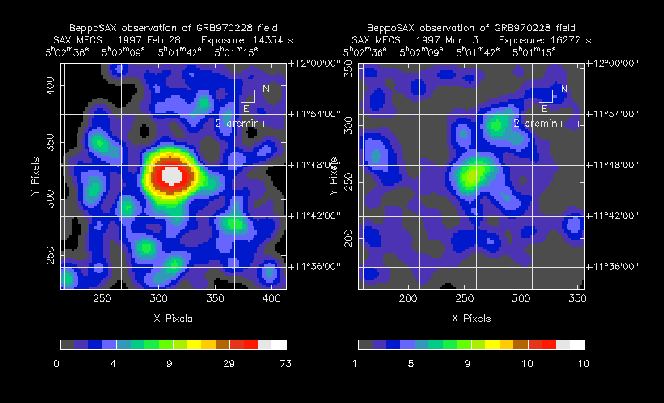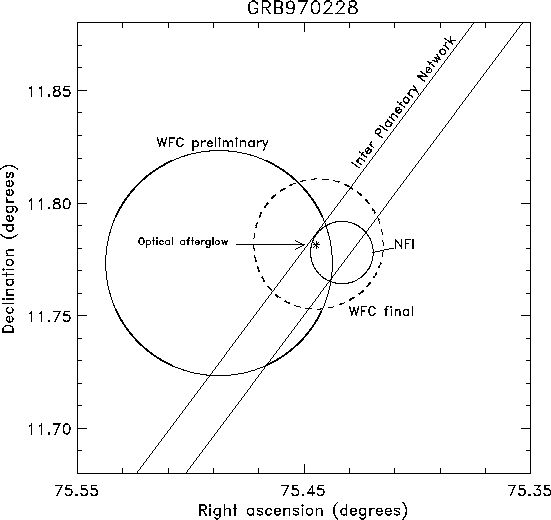


On the basis of experience gained in January 1997 (when a similar gamma-ray burst was observed in the constellation of Serpens by BeppoSAX, and studied in detail 16 hours later, in comparison with the previous record for a X-ray observation of about 18 days) the italian scientists responsible for the gamma-ray burst detector onboard the satellite (E. Costa, CNR, and F. Frontera, University of Ferrara), in conjunction with the Mission Scientist (L. Piro, CNR) and the Mission Director (R. C. Butler, ASI), were able to reschedule the satellite observations and point the BeppoSAX narrow field X-ray telescopes in only 8 hours at the gamma-ray burst source. In consequence a X-ray source never before seen was discovered and localized with an accuracy of one hundreth of a degree. The source is actually in the constellation of Orion.
A second follow-up has been performed with narrow field instruments after about 2 days. This second observation has shown a strong drop, about 20 times lower, in the source flux. The pictures taken during the two follow-up observations are shown in the figure below.

The bright source in the field is the new X-ray source
associated with the Gamma Ray Burst GRB 970228.
SAX J0501.7+1146 was
detected by the MECS and LECS at the same position (R.A. = 5h01m44s,
Decl. = +11o46'.7, equinox 2000.0; estimated error radius 50").
This position lies at the edge of the reported BeppoSAX WFC error
box, see following figure

The optical counterpart was detected at the intersection of the three error boxes of the gamma-ray burst and X-ray afterglow.
The BeppoSAX have been published in a Nature paper by Enrico Costa and collaborators (Costa et al. 1997, Nature 387, 783).